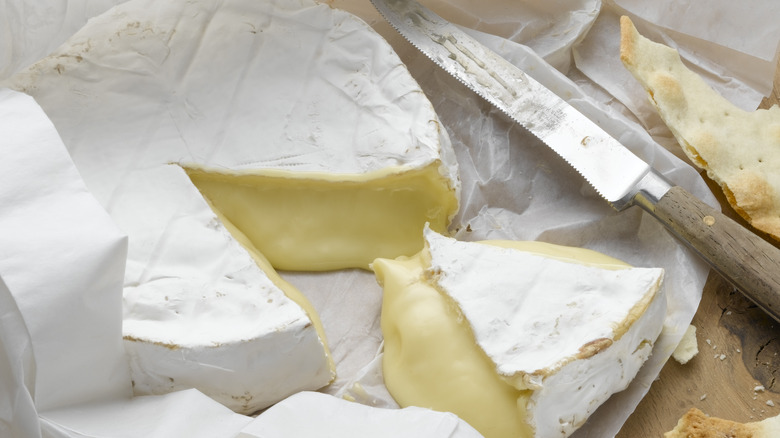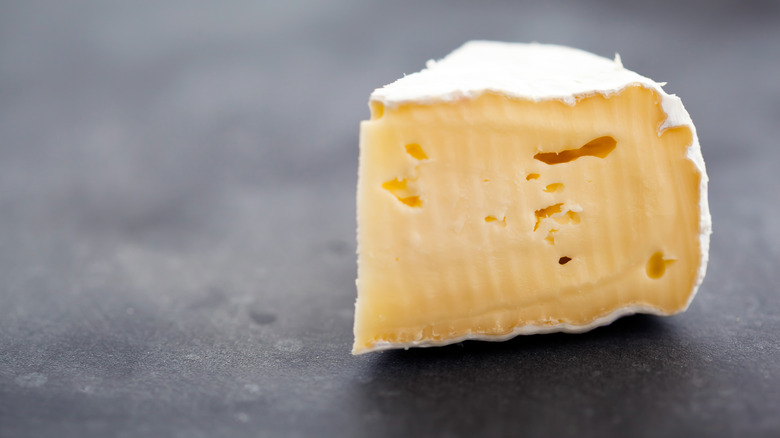The Best Way To Serve Brie Cheese Focuses On Texture
Who doesn't love Brie cheese; That soft and buttery deliciousness which 18th century Frenchmen proudly crowned as the "Queen of Cheeses"? And who could blame them? Because whether you decide to make creamy, decadent spaghetti with the help of Brie, or use Brie for game-changing garlic bread, there's really no way to go wrong with it. But perhaps one of the best things about this unique French delicacy is its ability to be enjoyed at room temp.
Hailing from northeastern France and named after the very district that produces it — where summers are short and temperatures in winter can plummet to 21 degrees Fahrenheit — Brie perfectly mirrors its place of origin. It is earthy, grassy, and boasts subtle notes of nuttiness. Dig a little deeper, and you might also detect a slight tanginess and some hints of mushroom in its rind. Typically made with cow or goat milk, Brie instantly melts in your mouth the moment it comes into contact with your taste buds.
Now, hazelnut and fig baked Brie is a delicious way to savor this cheese warm, and will most certainly leave you craving more. Still, many culinary experts out there would argue that Brie's true flavor is best experienced at room temperature. The reason for this lies in Brie's natural texture, which not only holds all the complex flavors, but also reveals its full-bodied richness.
How to leverage the texture of Brie cheese
Before you unleash your inner creativity and serve Brie alongside fresh baguette, crackers, and a mix of nuts and acidic fruit to highlight its smooth and silky texture, it's important to take the cheese out of the fridge, first. Leaving it at room temperature for at least half an hour before placing it on a platter will not only allow it to reach the optimal warmth naturally, but also transform it into a soft and creamy treat that will undoubtedly win over your guests.
Once the Brie has softened, it's time to help it release all of its hidden flavors. According to Charles Duque, managing director of The French Dairy Board, the best way to do this is by cutting it from its center toward the rind's outer edge. The traditional approach is to slice it into small, equal wedges, thus making sure that each piece contains a bit of the creamy interior and the white, flavorful rind. Speaking of which, you might not want to skip the rind. Not only is it edible, but its chewiness will also elevate your entire experience.
Ultimately, a sharp, acidic wine is the perfect companion to balance Brie's velvety texture and fat content of about 8 grams per ounce. A crisp chardonnay with hints of green apple; a bright, silky pinot noir; or a fresh, nutty chenin blanc are all great choices that won't overpower Brie's true character.

